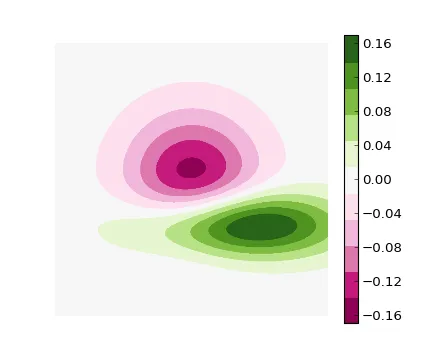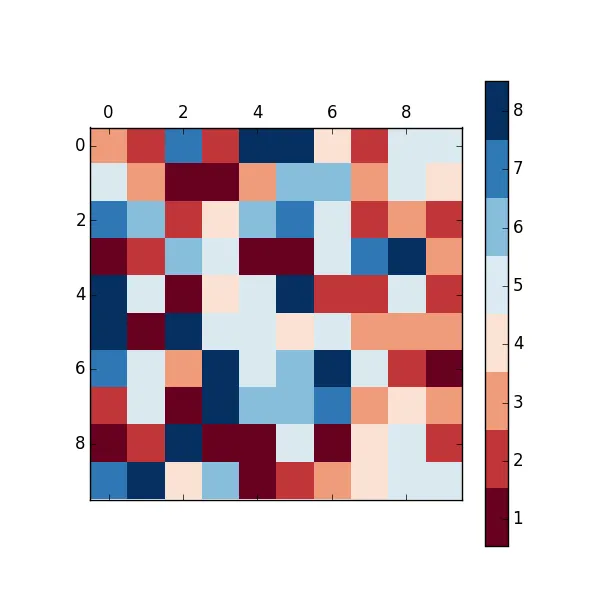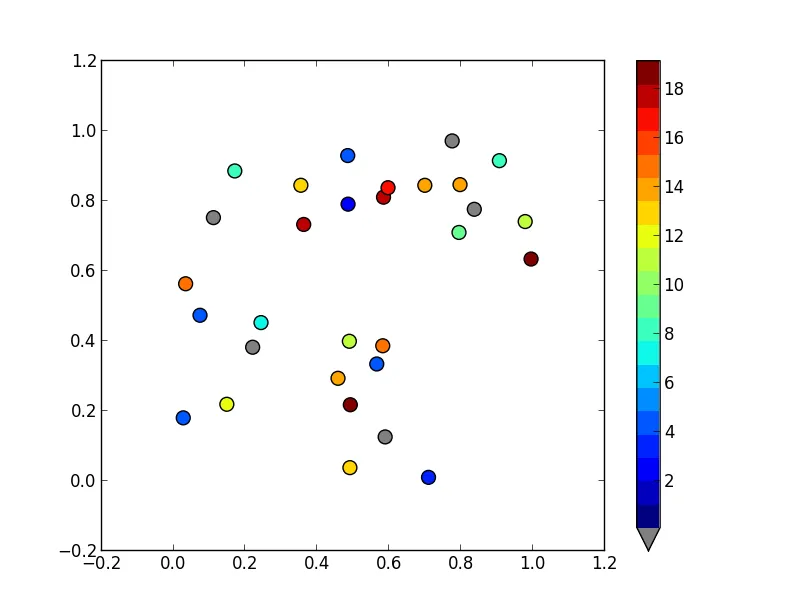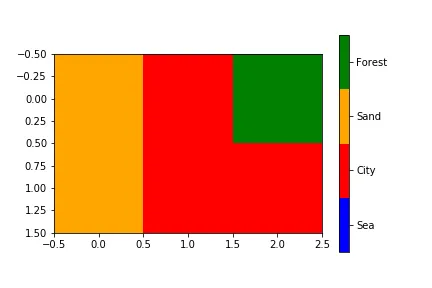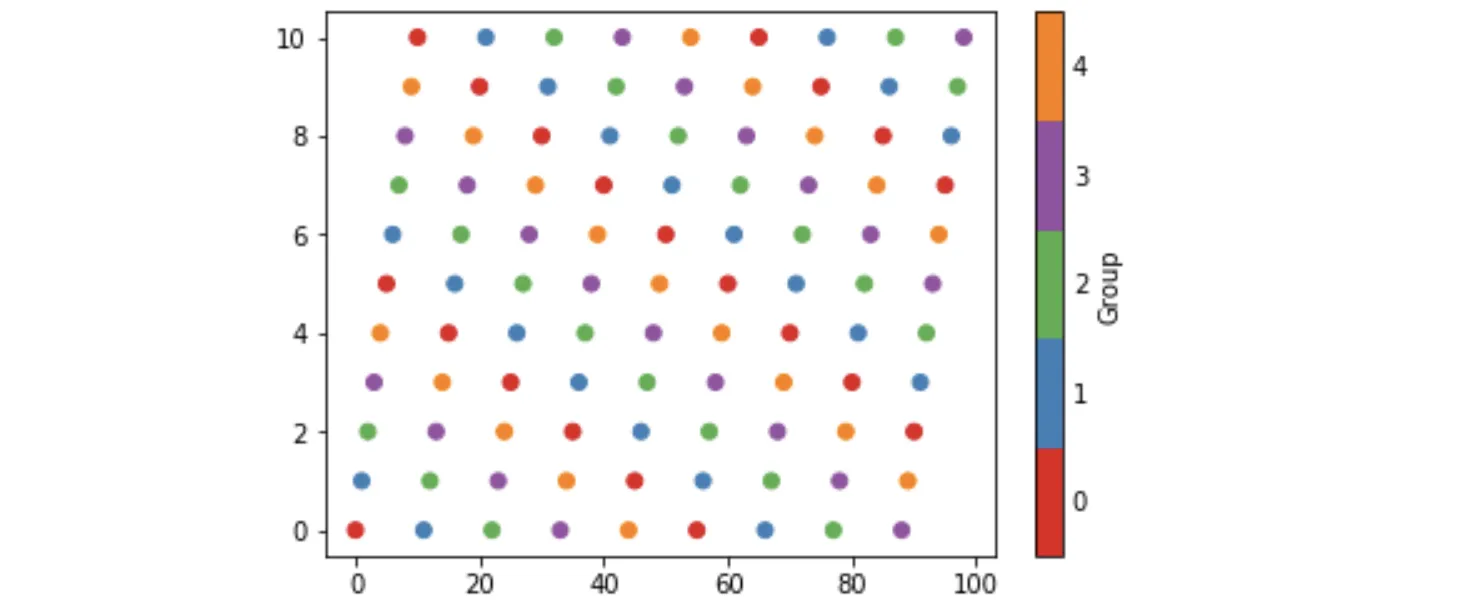通过使用BoundaryNorm作为散点图的规范化器,您可以轻松地创建自定义离散色条。 在我的方法中,有点古怪的是将0显示为灰色。
对于图像,我经常使用cmap.set_bad()并将数据转换为numpy掩膜数组。 这将更容易使0变为灰色,但我无法让它在散点图或自定义cmap中起作用。
作为替代方案,您可以从头开始制作自己的cmap,或读取现有的cmap并覆盖其中某些特定条目。
import numpy as np
import matplotlib as mpl
import matplotlib.pylab as plt
fig, ax = plt.subplots(1, 1, figsize=(6, 6))
x = np.random.rand(20)
y = np.random.rand(20)
tag = np.random.randint(0, 20, 20)
tag[10:12] = 0
cmap = plt.cm.jet
cmaplist = [cmap(i) for i in range(cmap.N)]
cmaplist[0] = (.5, .5, .5, 1.0)
cmap = mpl.colors.LinearSegmentedColormap.from_list(
'Custom cmap', cmaplist, cmap.N)
bounds = np.linspace(0, 20, 21)
norm = mpl.colors.BoundaryNorm(bounds, cmap.N)
scat = ax.scatter(x, y, c=tag, s=np.random.randint(100, 500, 20),
cmap=cmap, norm=norm)
ax2 = fig.add_axes([0.95, 0.1, 0.03, 0.8])
cb = plt.colorbar.ColorbarBase(ax2, cmap=cmap, norm=norm,
spacing='proportional', ticks=bounds, boundaries=bounds, format='%1i')
ax.set_title('Well defined discrete colors')
ax2.set_ylabel('Very custom cbar [-]', size=12)
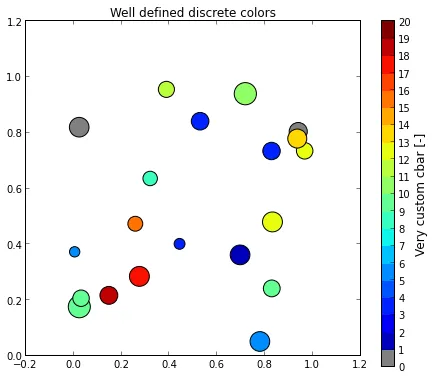
我个人认为,使用20种不同的颜色阅读特定值有点困难,但当然这取决于您。

